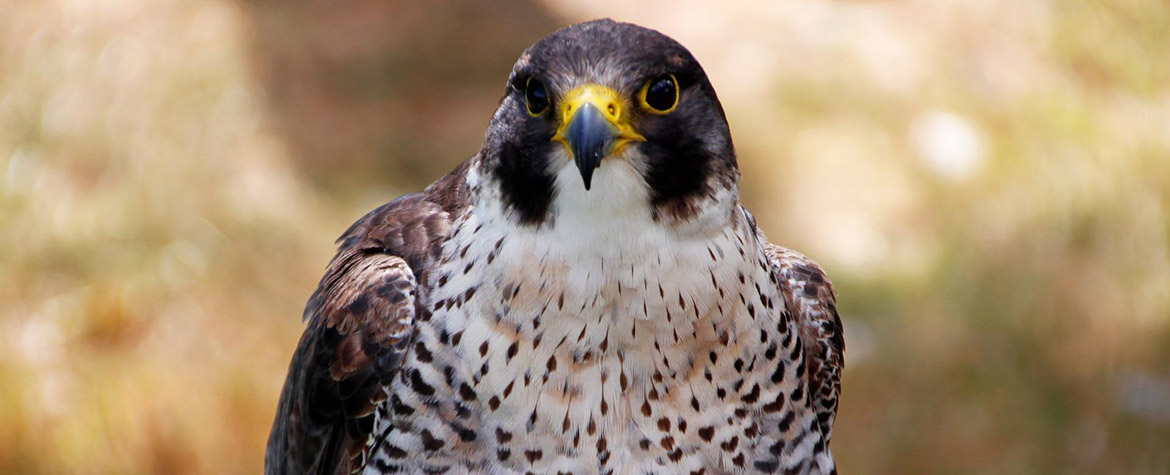From survivor to urban neighbours, there is good news for peregrine falcons
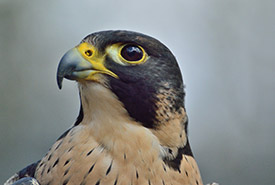
Peregrine falcon
Fifty years aog, peregrine falcons fell victim to the pesticide DDT. DDT weakened the bird’s eggshells to the point that it came close to extinction in the late 20th century. With the ban of DDT in 1972, and thanks to conservation efforts, peregrine falcons are well underway on the road to recovery. The reintroduction into the wild of breeding pairs born in captivity and monitoring falcons have led to a sharp increase in the species' numbers in Quebec. Although these efforts began in 1970, they are still ongoing and a 10-year recovery plan for peregrine falcons (French only) (2019 to 2029) has been presented by the Équipe de rétablissement des oiseaux de proie du Québec.
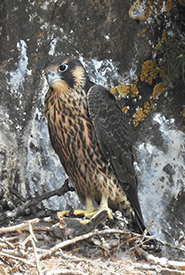
Peregrine falcon (Photo by Doris Hall)
The Nature Conservancy of Canada (NCC) is proud to have contributed to the recovery of this species by protecting its habitat.
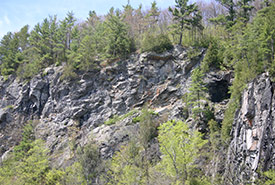
Alfred-Kelly Nature Reserve, QC (Photo by NCC)
In Quebec’s Alfred-Kelly Nature Reserve, NCC volunteers have been monitoring the progress of peregrine falcons for the past few years. High rock faces offer ideal perches for laying eggs and raising young.
Two pairs of birds that have come and gone at the nature reserve in the last few years are such good caregivers that they have even become adoptive parents! In fact, the Union québécoise de réhabilitation des oiseaux de proie, with the collaboration of the Comité régional pour la protection des falaises (French only) members, have reintroduced young, orphan peregrine falcon babies into their natural environment, which have been welcomed and weaned by the reserve's falcons.
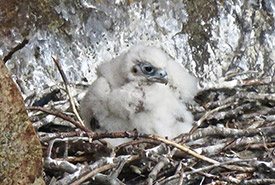
Young peregrine falcon (Photo by Doris Hall)
Peregrine falcons are an exceptional species in many ways. They can reach speeds of more than 300 kilometres per hour when diving, and they have adapted to human presence by establishing nests on infrastructures. Many bridges in the larger Quebec cities are also equipped with nesting boxes to welcome any falcons that wish to take up residence.
Peregrine falcons form long-lasting pairs and return to lay their eggs in the same area year after year. Some are even internet stars, such as the peregrine falcon pair — named Eve and Miro — that have settled on the side of a building at the Université de Montréal. Thanks to a camera installed in front of their nesting box, you can watch Eve and Miro via live stream, and follow them on social media!
